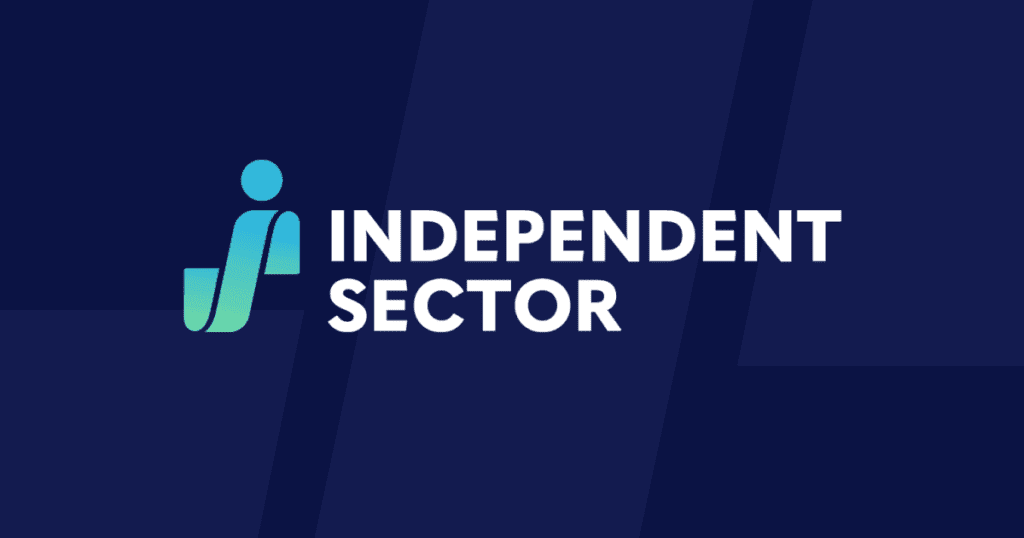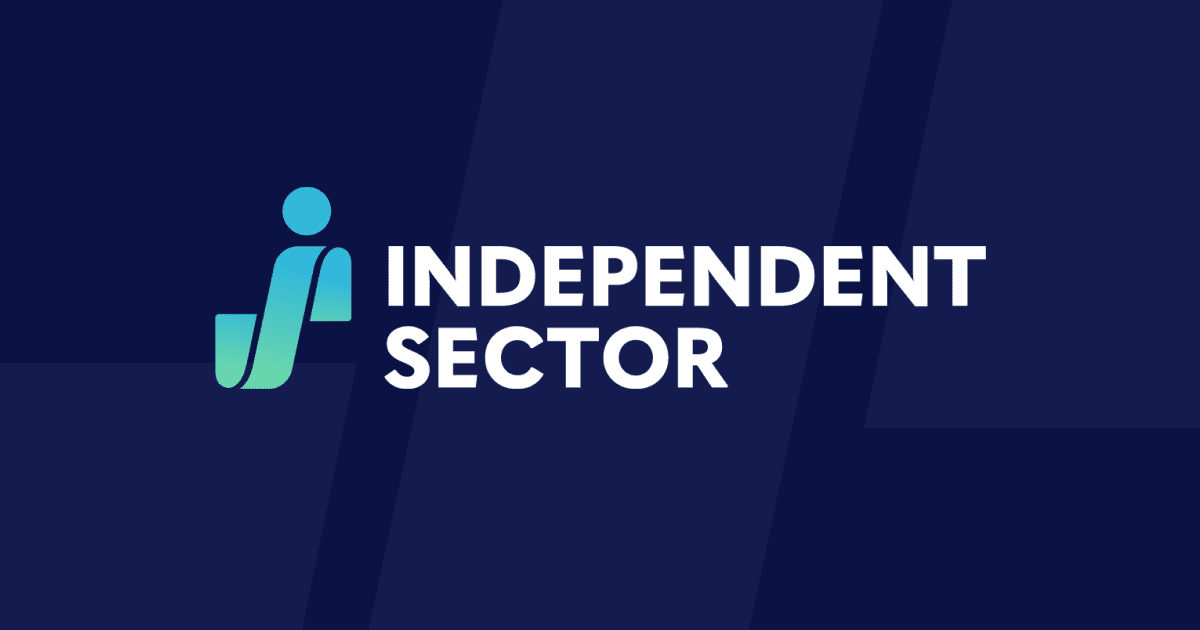(WASHINGTON, OCTOBER 12, 2021) – Independent Sector today released its second annual Health of the U.S. Nonprofit Sector report, an evolving resource that collects the most current data on the health of the U.S. nonprofit sector across multiple dimensions in a single, accessible format.
This report includes original research from Independent Sector, specifically analysis of federal data about the nonprofit sector’s economic impact and demographic composition. Other data is sourced from a wide range of existing research on nonprofit institutions.
Calling out dramatic shocks that COVID-19 caused to nonprofit finances, human capital, and programming, the Health of the U.S. Nonprofit Sector report notes some nonprofit organizations benefited from an increase in donations, many saw a drastic decline in fees-for service, and that others, such as those serving the arts, were affected disproportionately.
Drawing attention to “large holes in our knowledge of the sector’s health because there are disparities in the type, frequency, and quality of data we have available to measure our health,” the report highlights the need to “continually improve both the data inputs and the processes by which we engage sector leaders in interpreting data.”
“As nonprofits continue to cope with COVID-19, the extent to which their resources will keep pace with what communities need demands greater, urgent attention. This report and data analysis supports our sector and policymakers in making decisions,” said Daniel J. Cardinali, president and CEO of Independent Sector.
“To reach our collective goal that everyone in the U.S. thrives, our sector needs a better understanding of how nonprofits’ recovery and capacity vary by subsector, size, geography, and other factors. The ability to assess trends across all corners of the sector is crucial for nonprofits to continue meeting immediate needs, dismantling systemic inequities, and rebuilding our communities.”
The report focuses on four foundational indicators that help power the more than 1.8 million nonprofits serving people in the nation: Financial Resources, Human Capital, Governance and Trust, and Public Policy and Advocacy. It also offered recommendations for improvement in each foundational category – encompassing research, practice, and policy.
Highlights of insight, analysis, and recommendations provided include:
- COVID-19 brought monumental change to nonprofits, but the experience of individual organizations varied by subsector and size. For example, nonprofits serving the arts – vital for creative expression and connecting people – suffered differently than other subsectors.
- The pandemic caused nonprofit budgets to shrink, especially for organizations that rely on fees-for-service. Many nonprofits used reserve funds to stay open but risked financial stability.
- The nonprofit workforce – which initially lost 1.6 million jobs last year – isn’t expected to return to pre-pandemic levels until July 2022, though community needs nationwide have grown.
- Our sector needs to work toward creating a more racially diverse and equitable workforce. We must also support women, who make up a large percentage of our workforce and face unique burdens during the pandemic.
The report also spotlights potential and progress:
- Nonprofits still succeeded in contributing to civil society and our economy during the pandemic and recession.
- Nonprofit gross economic value to the nation increased last year, even as the U.S. Gross Domestic Product declined.
- Though 40% of nonprofits reported serving fewer people last year, they still had significant reach – with 57% of people in the nation saying they received services from a sector organization.
- In terms of advocacy and civic engagement, nonprofits secured life-saving financial and programmatic support, protected more than 4 million nonprofit jobs, and helped increase voter participation.
- More people in the U.S. reported they’re confident nonprofits can strengthen our society.
- For the first time in years, our sector witnessed an increase of people donating – creating an opportunity to communicate our societal value to new and returning donors.
Adding that “data can raise as many questions as it answers,” the report notes the importance of engaging nonprofits, as well as foundations, policymakers, academics, practitioners, and corporate giving leaders. Independent Sector “seeks to create regular engagement opportunities with our members and other nonprofits to process what we can learn from current data on nonprofit health, how we can improve future reports, and how we might best act on what we are learning.”
###
Independent Sector is the only national membership organization that brings together a diverse community of changemakers at nonprofits, foundations, and corporate giving programs working to ensure all people in the United States thrive.
If you’re interested, please share feedback about the report with us. Want to learn more? Independent Sector invites you to join us for next week’s Upswell Summit, October 20-22. We’ll be joined on Thursday, October 21 at 2-3:00 PM ET by Elisha Rhodes (Interim CEO of the YWCA USA), Ekundayo Bandele (Founder and CEO of Hattiloo Theatre), Stacy Palmer (Editor of The Chronicle of Philanthropy), and Daniel J. Cardinali (President and CEO of Independent Sector) for a candid conversation about the report, and where the nonprofit sector, collectively, can do better to support civil society.
Media Contact:
Bradley Wong
202-467-6122
media@independentsector.org

